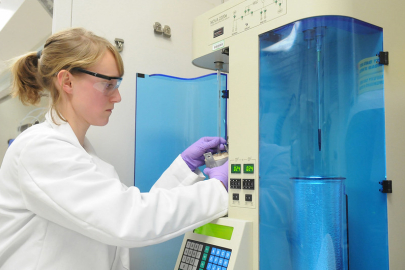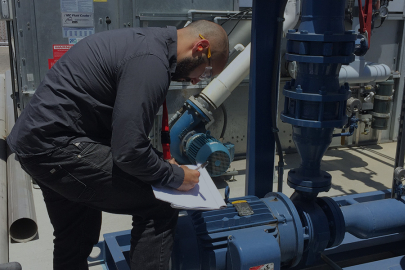Chemicals are a vital component to a wide variety of consumer and industrial products. End-uses for chemical products include:
- Basic chemicals, such as ethanol, gases, and other compounds used in manufacturing processes
- Consumer products such as plastics and detergents
- Specialty chemicals such as paints, coatings, and adhesives
- Agricultural chemicals such as pesticides and fertilizer.
The chemicals and petrochemicals industries account for about 40% of all industrial energy use and emissions in the United States, as illustrated in the 2022 U.S. Department of Energy Industrial Decarbonization Roadmap.
How Do We Decarbonize Chemical Manufacturing and Petroleum Refining?
Converting between chemical building blocks to create chemical products is incredibly energy intensive. This energy demand has historically been satisfied by fossil fuel combustion releasing greenhouse gases and wasting primary energy input. Technologies like advanced reactors and separations, industrial electrification, and low carbon process heating can reduce emissions and increase energy efficiency, putting the United States chemicals sector on a path to net-zero carbon emissions by 2050.
Decarbonizing energy production alone is not enough, as chemical feedstocks need to be decarbonized too. Greenhouse gas emissions are released when natural gas and petroleum feedstocks are sourced and converted to chemical products. Technologies that utilize and convert sustainable feedstocks like waste gases (CO₂, CO), biomass (such as municipal solid waste, starch, and lignin), recycled materials, renewable natural gas, and hydrogen (H₂) into fuels and chemical products will be needed to achieve net-zero carbon emissions.
For example, steam cracking processes use natural gas liquid feedstocks, such as ethane, to produce valuable olefins (such as ethylene, propylene, and butadiene). Olefins are critical building blocks for a variety of end products including plastics, detergents, and coatings. However, olefin production is energy and carbon intensive.
Reducing carbon emissions and energy input is a key aspect of sustainable chemistry goals to design and use chemicals with lower impacts on humans and environmental health. Broadly, sustainable chemistry can be defined as the design, development, and use of chemicals and materials that:
- Have lower energy consumption and emissions
- Are less toxic to human health and the environment
- Have reduced natural resource impacts
- Are designed for reduced waste and increased recycling capability across the product life cycle.




